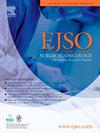The efficacy and oncological safety of minimally invasive axillary procedures in patients with node-positive breast cancer receiving neoadjuvant chemotherapy: A network meta-regression and trial sequential analysis
IF 3.5
2区 医学
Q2 ONCOLOGY
引用次数: 0
Abstract
Background
Neoadjuvant chemotherapy (NAC) can downstage axillary nodes in breast cancer, prompting debate over the optimal axillary management after NAC. While axillary dissection (ALND) provides detailed assessment of node status, minimally invasive methods such as sentinel lymph node biopsy (SLNB), marked lymph node biopsy (MLNB) and targeted axillary dissection (TAD) are showing promise. This meta-analysis aims to assess the efficacy and safety of these strategies.
Methods
A systematic search of Medline, Embase and Cochrane Central was conducted and relevant RCTs were identified. Random-effects meta-analysis, meta-regression and trial sequential analysis (TSA) were conducted for diagnostic outcomes (identification rates [IFR], false negative rates [FNR] and negative predictive value [NPV]) and survival outcomes (overall survival [OS], disease-free survival [DFS]) to compare SLNB, MLNB and TAD with ALND.
Results
Twenty-eight studies (SLNB, n = 3392; MLNB, n = 1130; TAD, n = 946) investigated diagnostic outcomes and nine studies investigated survival outcomes (n = 5647). The pooled IFR, FNR and NPV of TAD was 96.8 %, 4.7 % and 93.2 %, respectively, and all values were superior to SLNB (91.9 %, 13.7 % and 84.8 %; meta-regression, p < 0.001) (SLNB vs. MLNB concordance = 73 %). The FNR of SLNB decreased with the number of nodes removed (≥3 nodes, 8.1 %) but remained inferior to TAD (p = 0.001). The IFR of SLNB in the ycN0 group was statistically lower than all patients (ycN0/+), 85.8 % vs. 91.9 % (p < 0.001). Pooled hazard ratios for DFS in SLNB/TAD, SLNB and TAD were 0.90 (95%CI, 0.77–1.04; p = 0.45), 0.89 (95%CI, 0.74–1.08; p = 0.25) and 0.91 (95%CI, 0.64–1.29; p = 0.58) (TSA 2.08>threshold). Indirect comparison between TAD and SLNB demonstrated no significant difference in DFS (HR 0.98; 0.64–1.32; 95%CI, p = 0.95).
Conclusion
Targeted axillary dissection is the optimal minimally invasive axillary technique in terms of diagnostic accuracy. De-escalation of axillary surgery following NAC does not negatively impact DFS in patients with node-positive breast cancer
背景新辅助化疗(NAC)可降低乳腺癌患者腋窝结节的分期,从而引发了对新辅助化疗后最佳腋窝管理的争论。腋窝清扫术(ALND)可对结节状态进行详细评估,而前哨淋巴结活检术(SLNB)、标记淋巴结活检术(MLNB)和靶向腋窝清扫术(TAD)等微创方法正显示出良好的前景。本荟萃分析旨在评估这些策略的有效性和安全性。方法对 Medline、Embase 和 Cochrane Central 进行了系统检索,并确定了相关的 RCTs。随机效应荟萃分析、荟萃回归和试验序列分析(TSA)对诊断结果(识别率[IFR]、假阴性率[FNR]和阴性预测值[NPV])和生存结果(总生存率[OS]、无病生存率[DFS])进行了分析,以比较 SLNB、MLNB 和 TAD 与 ALND。结果28项研究(SLNB,n = 3392;MLNB,n = 1130;TAD,n = 946)调查了诊断结果,9项研究调查了生存结果(n = 5647)。TAD的集合IFR、FNR和NPV分别为96.8%、4.7%和93.2%,所有数值均优于SLNB(91.9%、13.7%和84.8%;元回归,p <0.001)(SLNB与MLNB的一致性=73%)。SLNB 的 FNR 随切除结节数的增加而降低(≥3 个结节,8.1%),但仍低于 TAD(p = 0.001)。从统计学角度看,ycN0 组 SLNB 的 IFR 低于所有患者(ycN0/+),为 85.8 % vs. 91.9 %(p < 0.001)。SLNB/TAD、SLNB 和 TAD 的 DFS 汇总危险比分别为 0.90(95%CI,0.77-1.04;p = 0.45)、0.89(95%CI,0.74-1.08;p = 0.25)和 0.91(95%CI,0.64-1.29;p = 0.58)(TSA 2.08>阈值)。TAD和SLNB的间接比较显示,DFS无显著差异(HR 0.98; 0.64-1.32; 95%CI, p = 0.95)。新农合后腋窝手术的降级不会对结节阳性乳腺癌患者的 DFS 产生负面影响
本文章由计算机程序翻译,如有差异,请以英文原文为准。
求助全文
约1分钟内获得全文
求助全文
来源期刊

Ejso
医学-外科
CiteScore
6.40
自引率
2.60%
发文量
1148
审稿时长
41 days
期刊介绍:
JSO - European Journal of Surgical Oncology ("the Journal of Cancer Surgery") is the Official Journal of the European Society of Surgical Oncology and BASO ~ the Association for Cancer Surgery.
The EJSO aims to advance surgical oncology research and practice through the publication of original research articles, review articles, editorials, debates and correspondence.
 求助内容:
求助内容: 应助结果提醒方式:
应助结果提醒方式:


